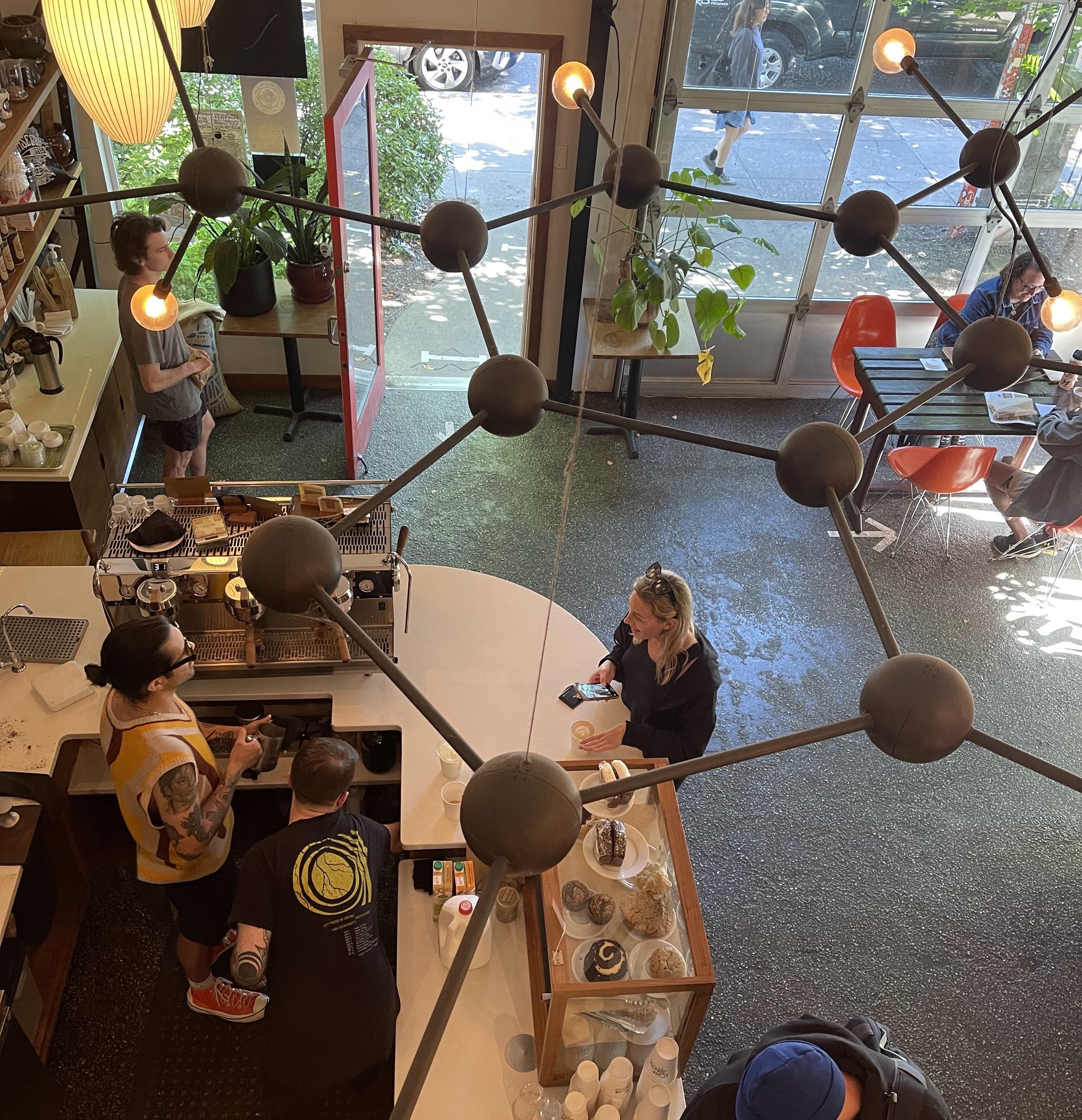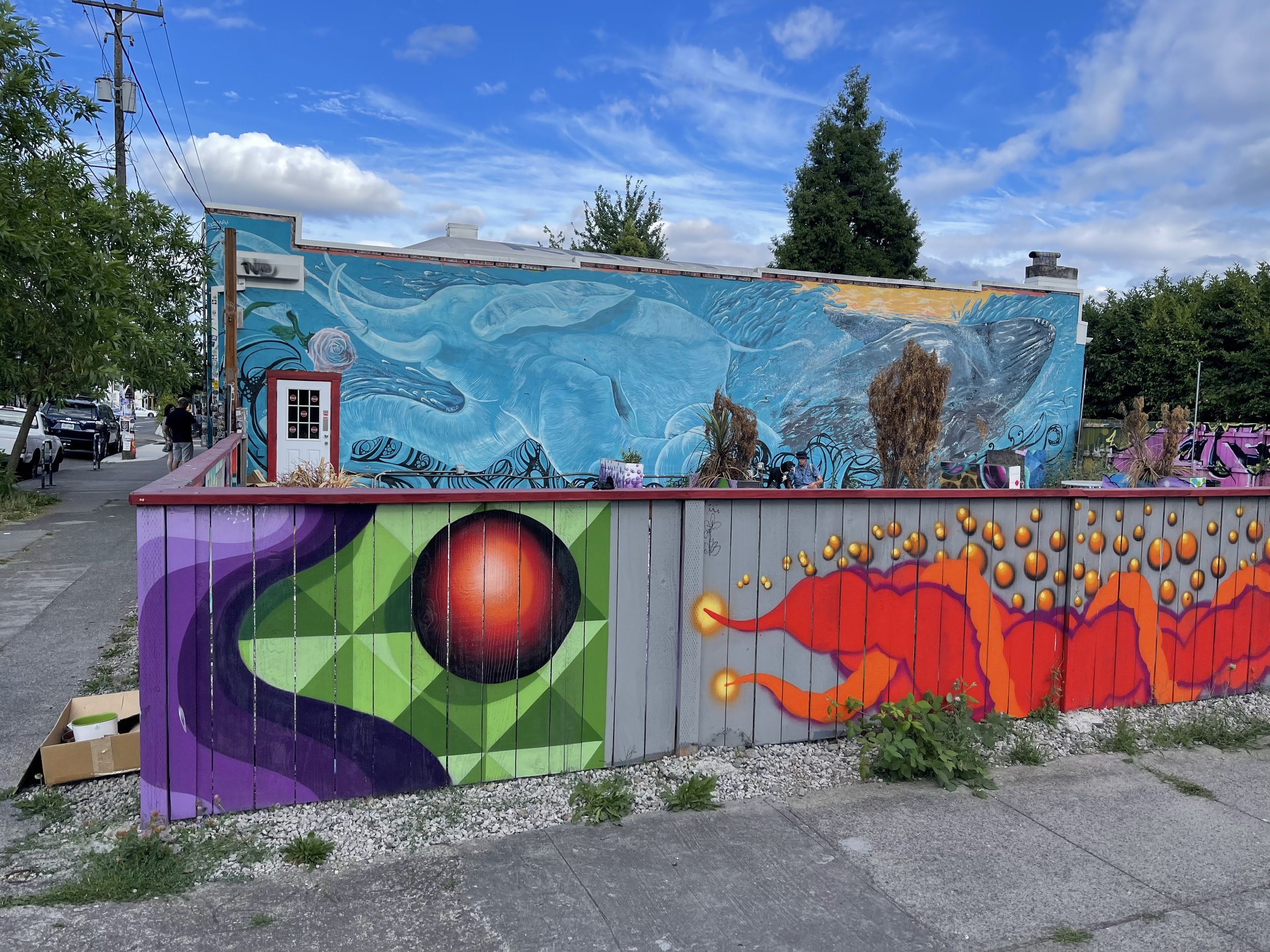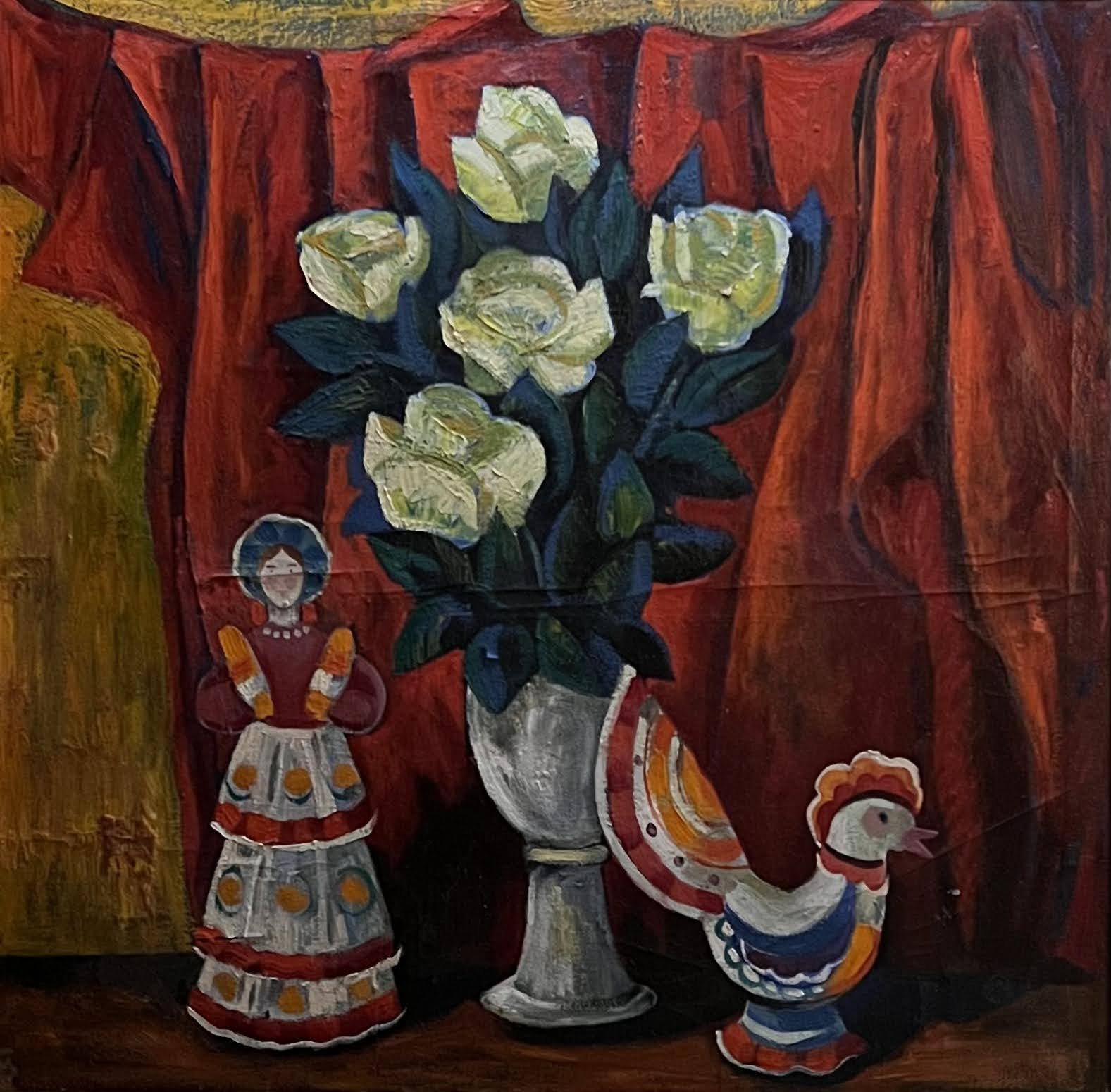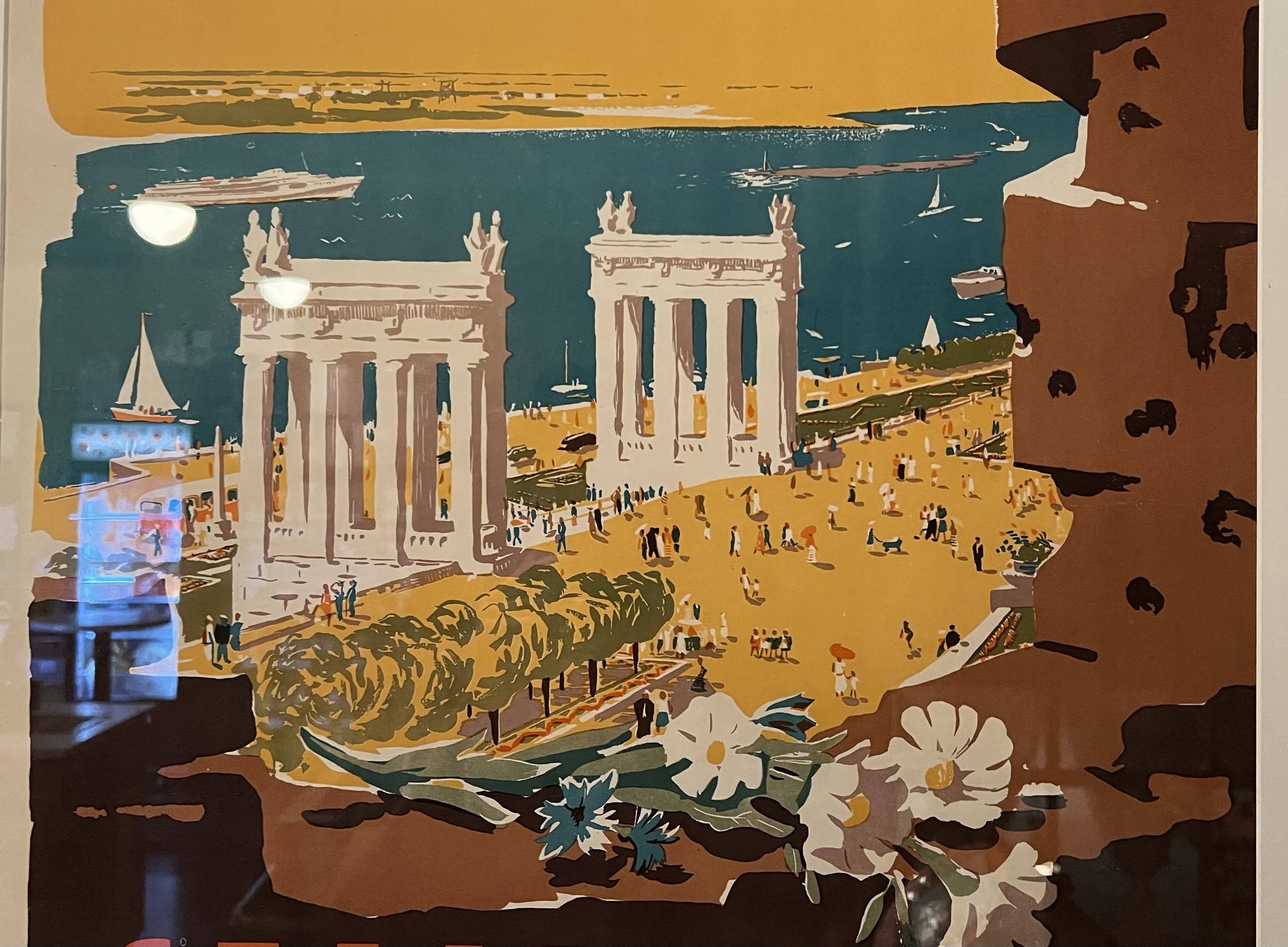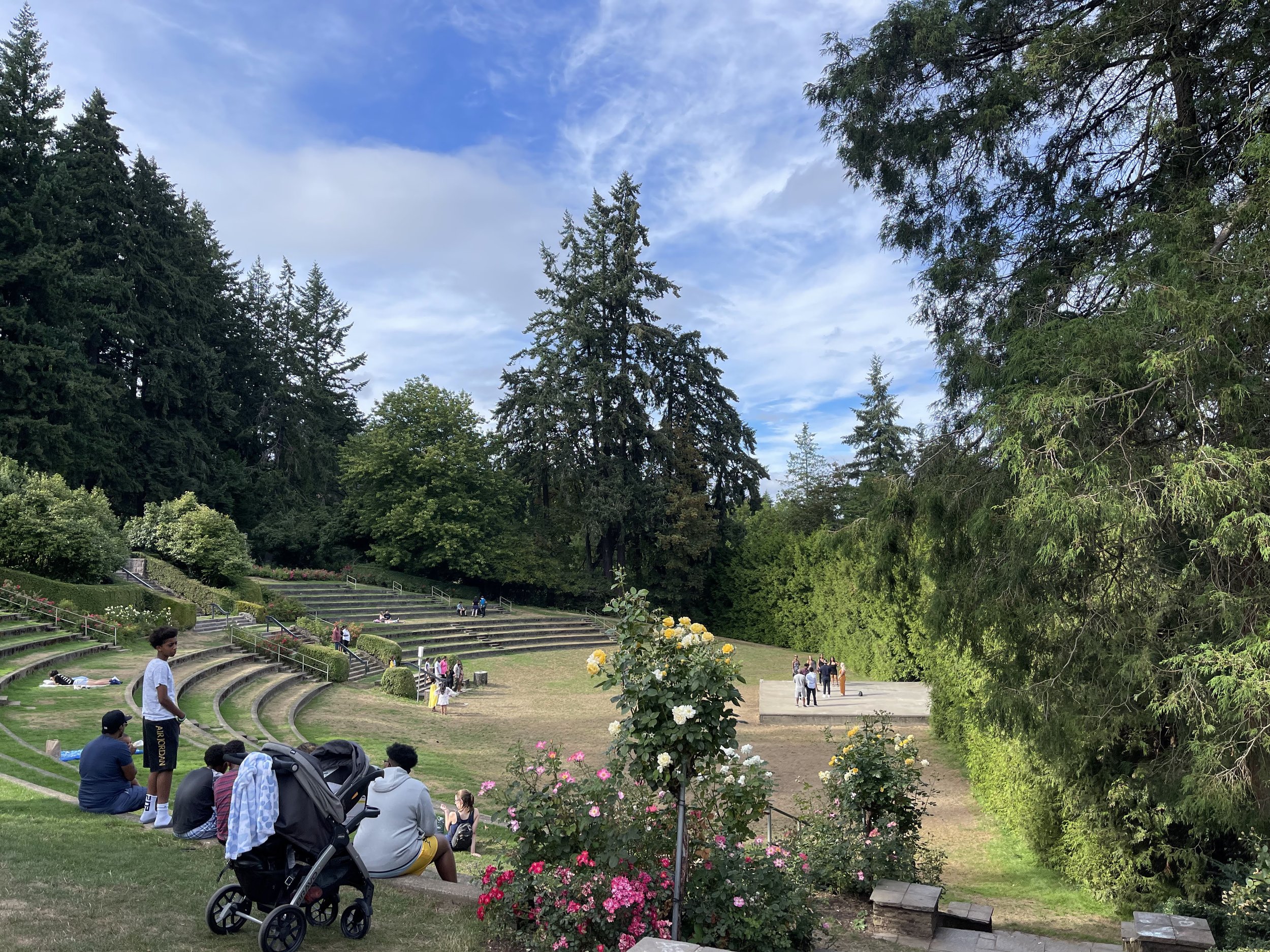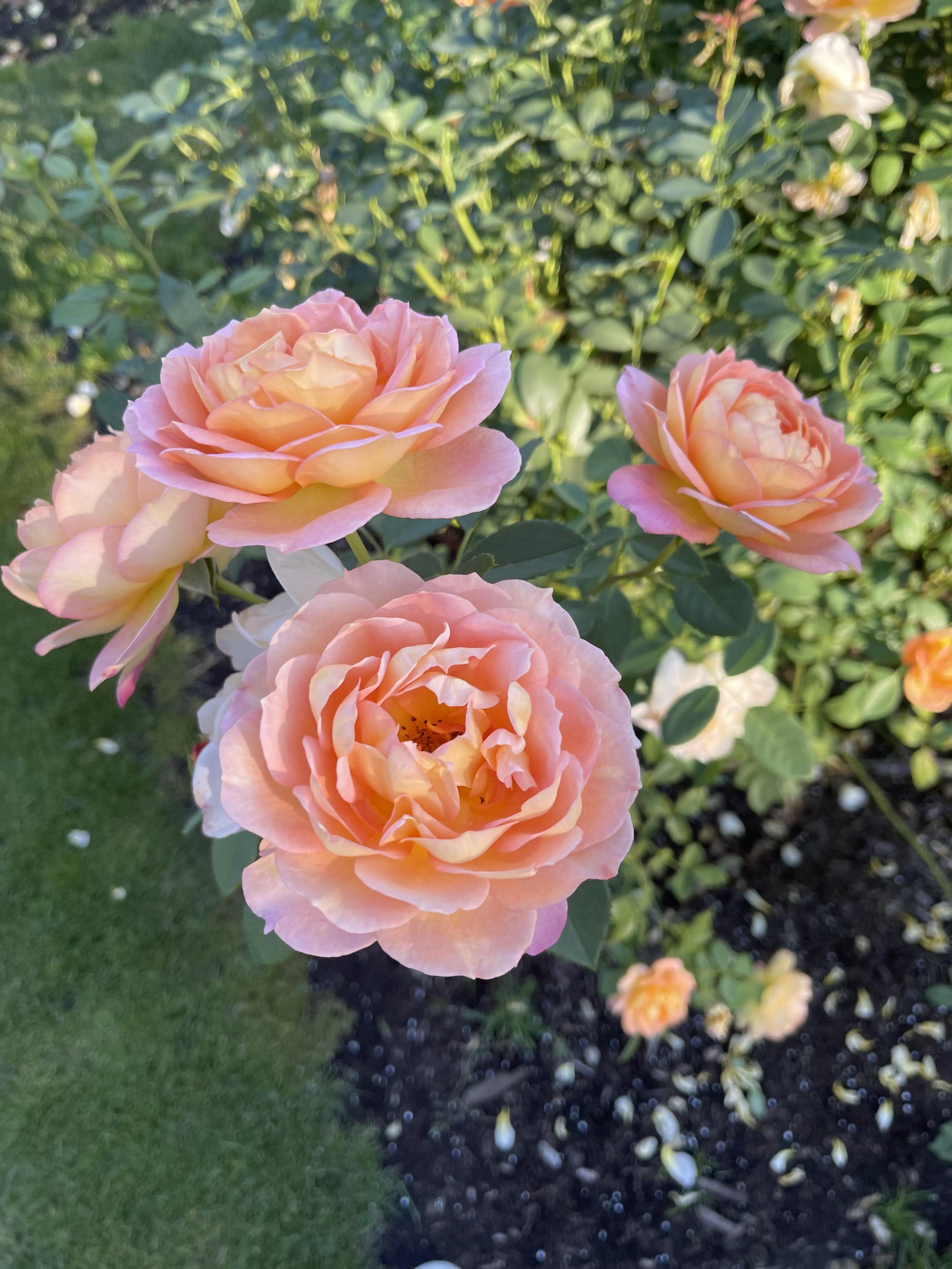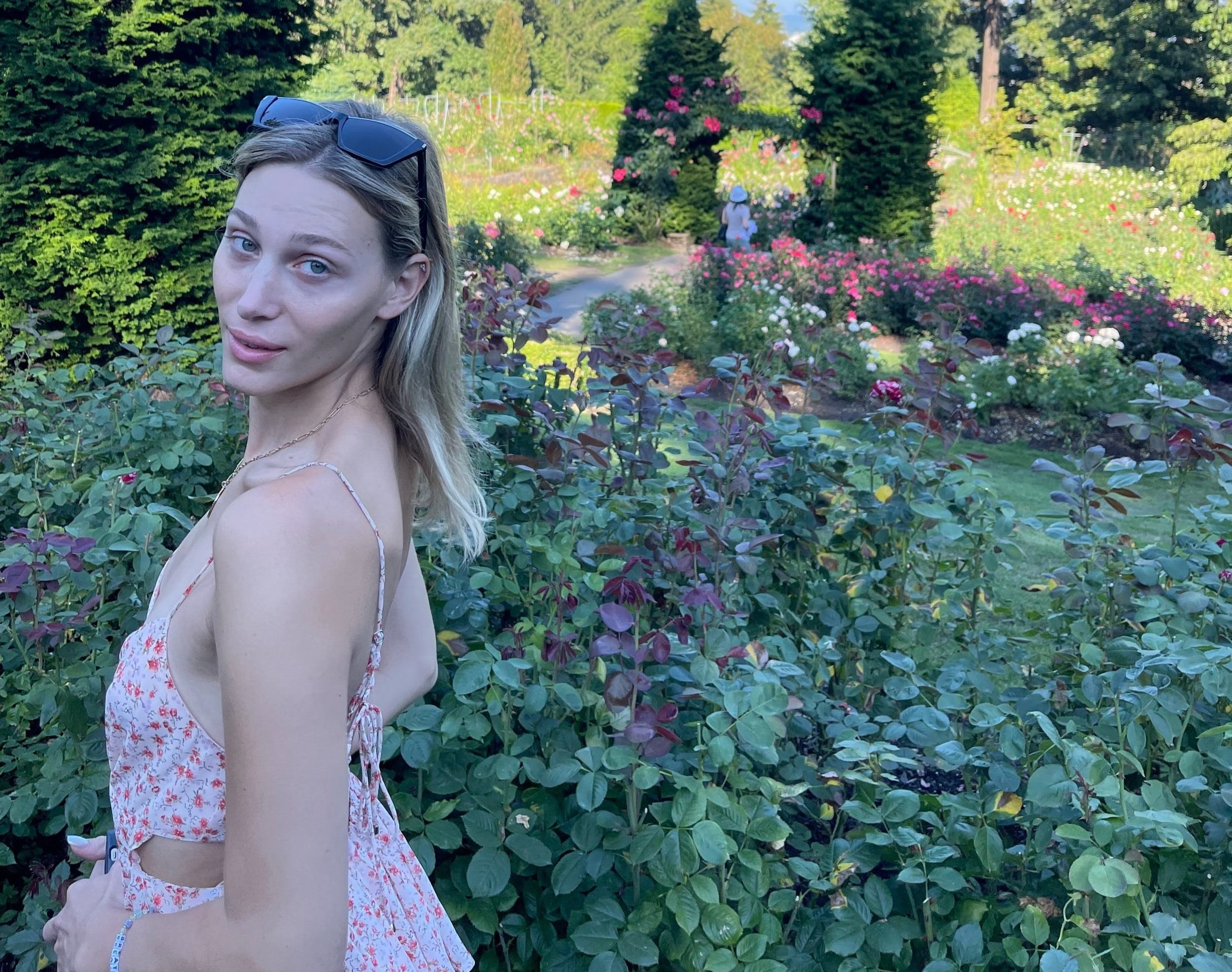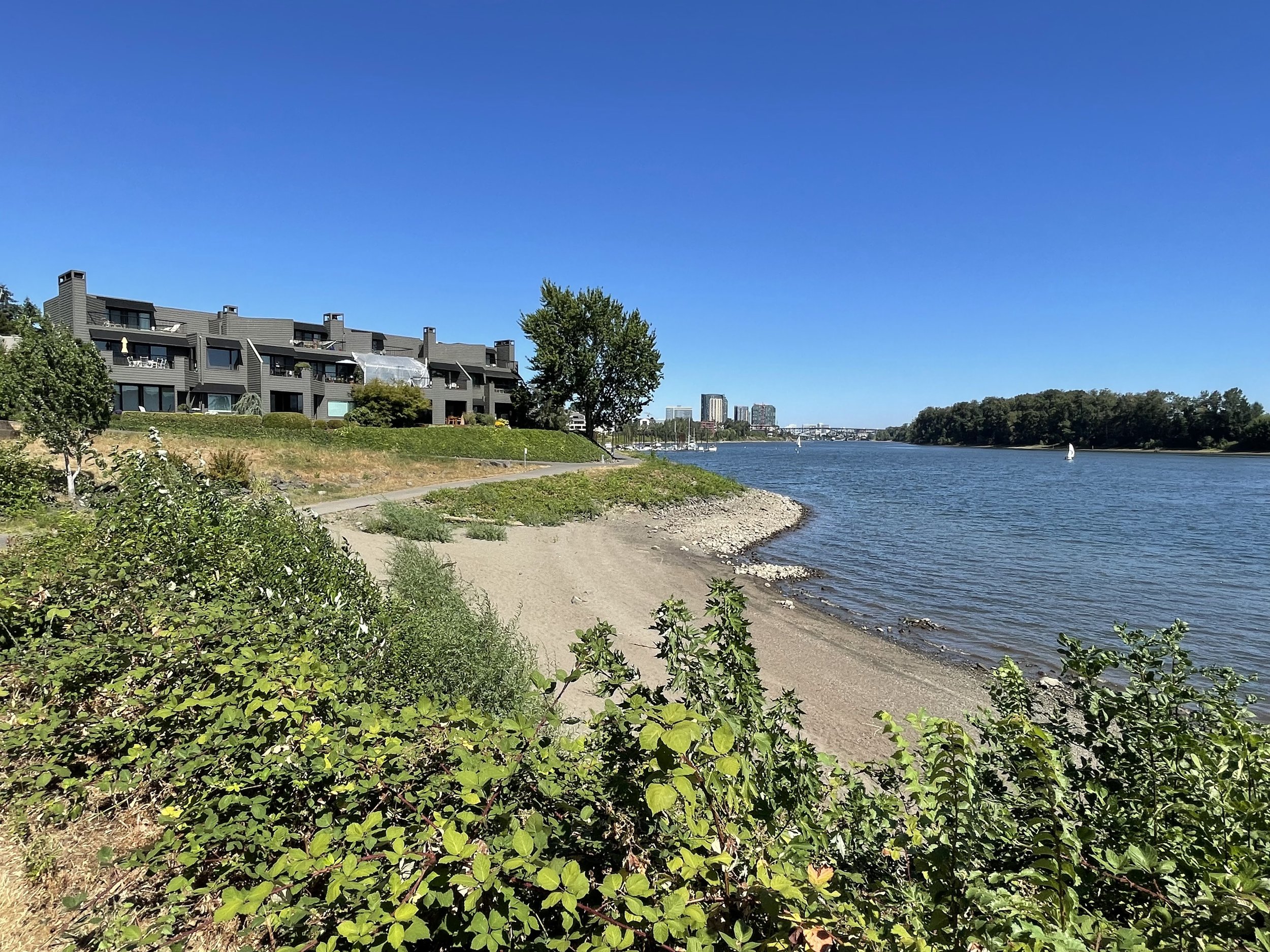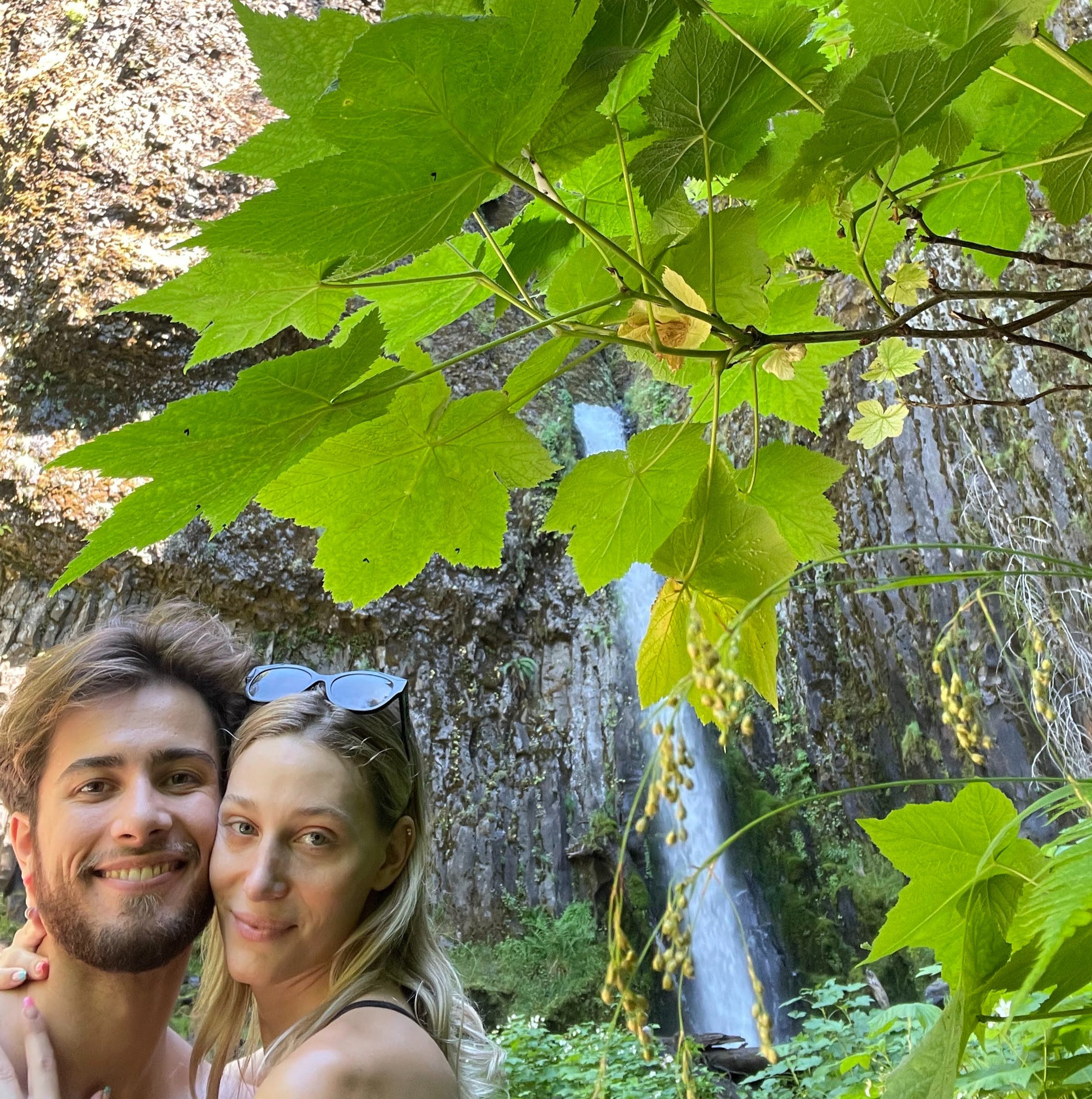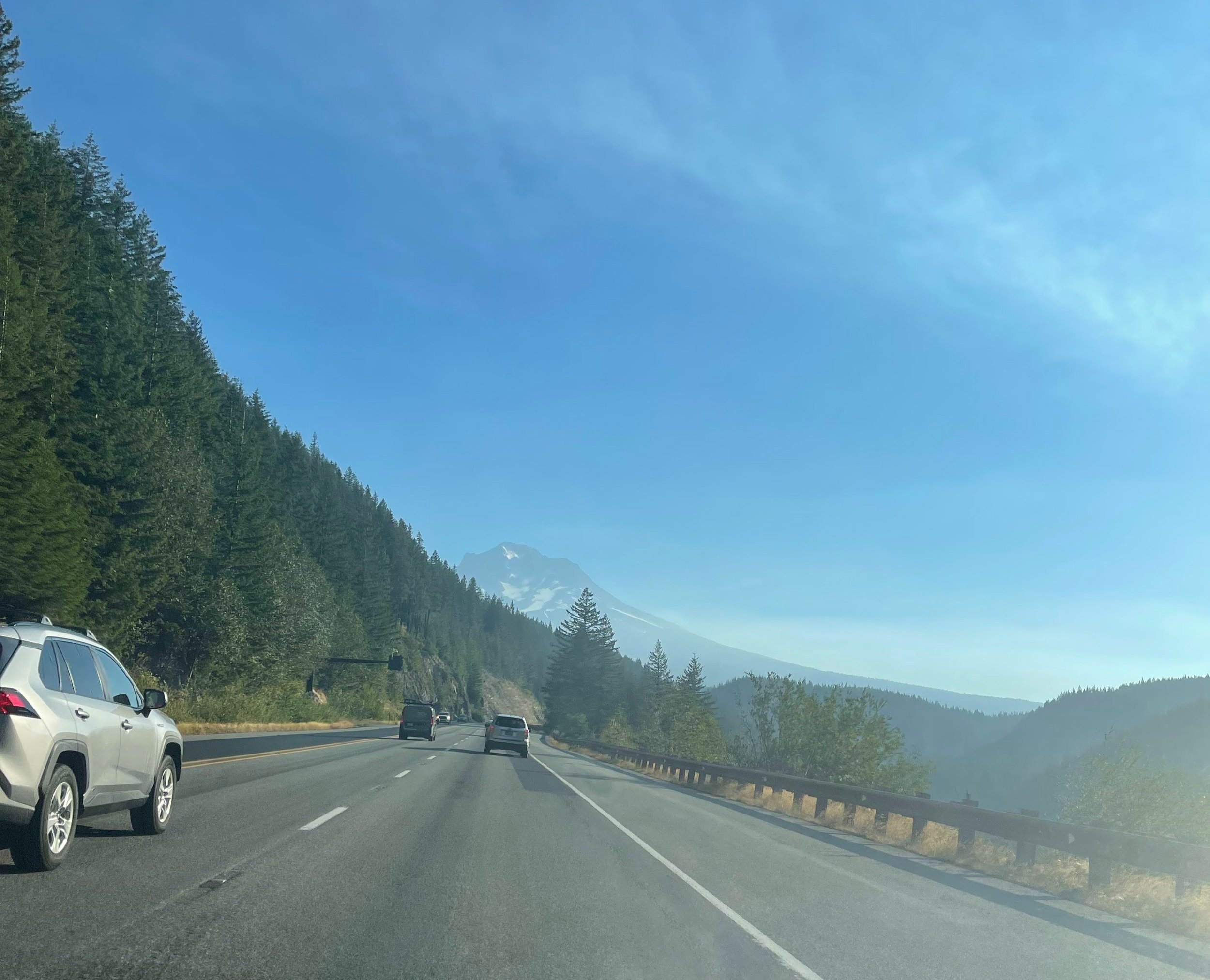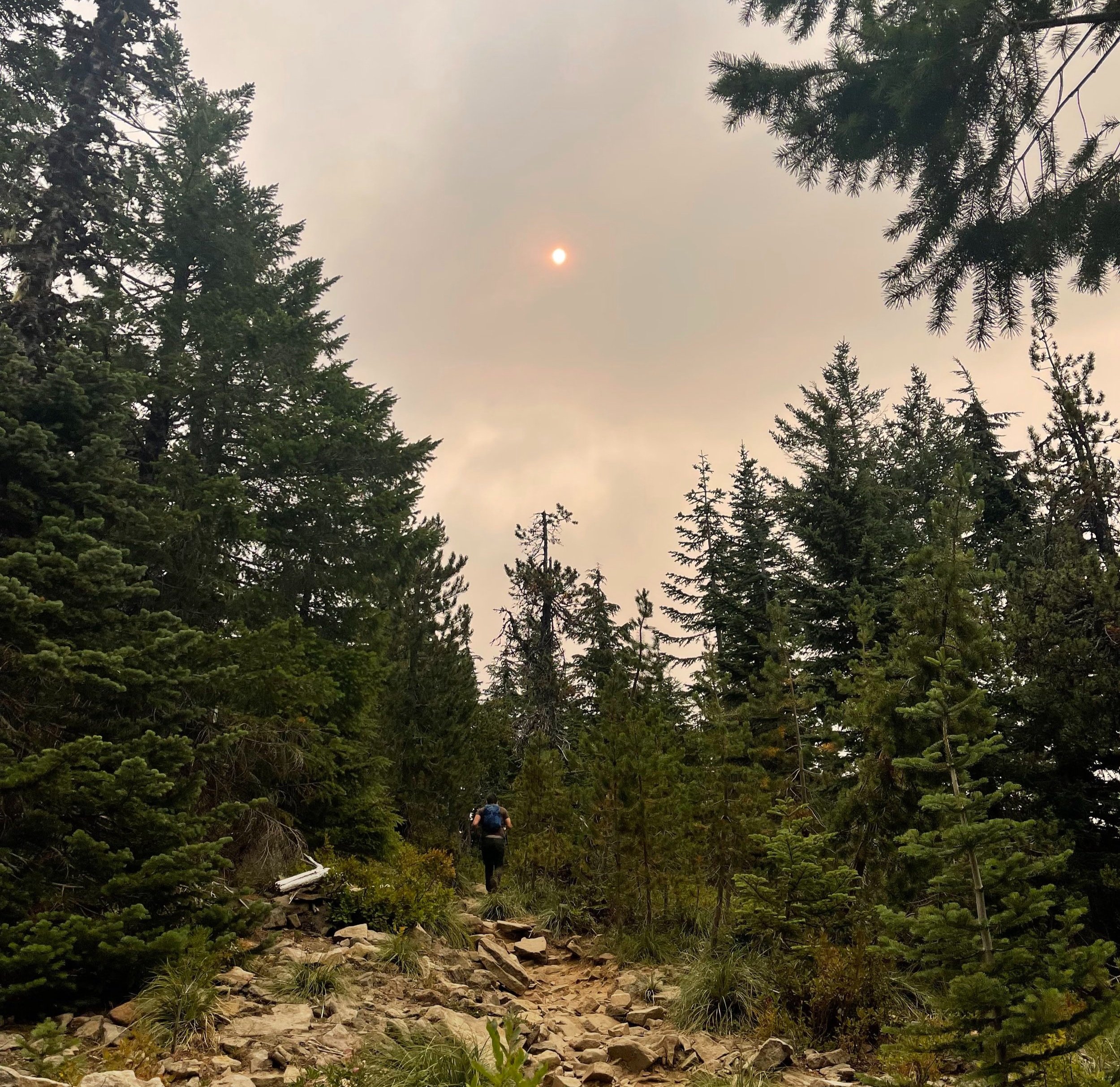A Gentleman in Portland
In June, I drove north from LA to Portland for a three-month internship, spending my nights on the road in Motel 6’s reading A Gentleman in Moscow. I’ll try not to spoil it too much over the course of this writing, but the book mostly follows the main character Count Alexander Ilyich Rostov as he spends years under house arrest in a lavish hotel. He does have some friends and acquaintances, but ultimately he’s very isolated.
My summer in Oregon helped me understand a little bit how he felt. Obviously I wasn’t sentenced to a life within four walls, but I did spend a lot of time alone, I did do a lot of reflecting, I did see relatively few people, and I did get confined to my room at one point.
Usually we experience books solely in the imagination, but this one seemed to bleed into my everyday life. This post essentially sets out to answer the question of “What does a man alone in Portland get up to?” and I figured the best way to answer that is to parallel the story of the Count. Looking back, I imagine as if were an actor playing the part of Rostov, and we had:
Alberta performing as Theatre Square
I lived in Alberta, a neighborhood in Portland’s northeast district and thus across the river from both my office and the downtown. It felt as if every inch of Alberta’s walls were covered in murals. On one street corner, rather than tied-up sneakers hanging from the telephone lines, hung a pair of tied-up dildos.
One evening, driving home from seeing the new Elvis movie with my girlfriend, a stream of bicycles suddenly blocked the road in front of us. Apparently we’d stumbled across Pedalpalooza, “a festival of bikey fun.”
A man sporting a tank top and jean shorts stopped in front of us as if to protect his compatriots from the growing line of backed-up cars. He waved and smiled as blue bikes, pink bikes, bikes wrapped in twinkling lights — all sorts of bikes really — meandered by. As cars honked in frustration, the bikers cheered in response. After fifteen minutes, the man got out of our way and a decent gap in the procession opened up, so we shot on through towards home.
A Small Room in a Shared House performing as the Belfry of the Metropol Hotel
It really wasn’t much. I’d booked about as cheap of an arrangement as I could find: a private room within a shared Airbnb. I was one of three rooms on the second floor, and while the rest of the house was full of people, I didn’t see another soul for the first few weeks. I did hear them though, such as when the others used our shared bathroom. At times they left behind evidence of their habitation, such as when one lady left her fake eyelashes on the bathroom sink counter. It became a topic of conversation at work; my boss thought it weird that neither I or my housemates had sought the other out, but a teammate of mine chimed in: “That’s pretty typical Portland.”
Eventually I encountered a few others, exchanging a nod or at most a hello. Yet I can’t say I felt too comfortable living there. On Wednesdays & Fridays, when we were allowed to work remote, I persisted in heading into the office.
It was after a two-week trip out east that I was forced to get comfortable with that room; I got covid. Truly felt like Rostov then, all stuck in my garret. While it didn’t have AC, at least it had a fan. While the ceiling was too short for me to do Mountain Pose without bending my arms, at least I could do yoga. I sat stuck in the above-pictured lounge chair nearly all day, working with the wooden chair acting as my desk, but at least I could see the sunset when I stuck my head out the window.
A Variety of Cocktail Bars performing as The Shalyapin
I did get the chance to visit a few cocktail bars over the summer, which is more than the Count can say, having been limited to the same old spot. One was the Bible Club in Sellwood:
It may not look like much of a bar, but that’s because it’s styled as a speakeasy. The doormat and a small sign in the window reading “No Minors” are the only giveaways… other than the noise emanating from their outdoor section behind the building. One step inside takes you back in time, to a room in which every aspect — from furniture to art — predates 1930:
Upon arrival I had my choice of open seats, but the place quickly filled up. My waitress took my order, kicked the front door closed (it’d been left open), and commenced making two drinks at once — shaking one while stirring another. Minutes later she returned to my table with the Suzy Sutton. It smelled fruity but tasted smoky, for which you can thank the flower garnish and mezcal. On my last sip, the flower landed perfectly on my nose for a deep inhale. City of Roses indeed.
While sipping on the Ring-a-Ding-Ding — served in a cold gold goblet and tasting like the Spice Tea of cocktails — I observed the other clientele. Not all fit into the 1920’s aesthetic — as I noticed orange hair, tank tops, and tattoo sleeves — though there was a white-haired man who sat alone on the couch. After some time, a woman who looked young enough to be his granddaughter walked in. Instead of sitting across the table from him, as I’d expected, she sat down next to him on the couch. I could read the tattoo on her lower back, and it said: “Living is easy with eyes closed.” Later, as I walked from the bathroom towards the exit, I noticed her tucked into a hidden alcove, staring down at her phone and feverishly texting away.
Another cocktail bar, Expatriate, I sampled when my brother Ray visited towards the end of August. It was a short enough walk down Alberta Street from my place. We sat at the bar, right across from the disc jockey and his two record players.
I began with the Mirage, essentially a mezcal Manhattan with celery bitters, before switching it up to the Pangolin. Now that one was a sensual flavor explosion.
It tasted kaleidoscopic, like different things at different moments. At first it tasted ruggedly sexy — which feels odd to say, yet accurate — like a blonde Bond Girl on the beach. A bite of shrimp toast seemed to amplify the flavor, whereas a bite of salad toned it down. At times it tasted like a sweet-and-sour fruit gummy, though it always retained the dignified airs of a classic whiskey drink.
Next we both got the Vendetta. “Now that’s a drink!” exclaimed Ray, which, coming from someone who doesn’t drink all that much, must really mean something. It had a soft syrupy pineapple flavor, well balanced with the taste of rum.
The third and final experience I’ll mention came on a Tuesday night. In fact, it was my last night in Portland. I had to make it Tuesday because weeknights are the only time the Multnomah Whiskey Library lets non-members in. They escorted me to the bar where I sat and stared at the library shelves:
Where to even start? I love whiskey but am no connoisseur. Besides, I’m not in the market for, say, a $209 glass of Balvenie 30-year, not to mention a $998 glass of Macallan M, which I think was the most expensive on their 65-page menu.
That’s what (good) bartenders are for though. You don’t have to be a connoisseur! My man inquired as to my general price range, asked a few questions about my palette, and brought me a flight. My only stipulation was that the whiskeys be from Oregon.
They came from the Willamette Valley (Oregon’s wine country), from Portland proper, and from the confluence of the Columbia and Hood rivers. All three were strong enough to make my mouth go numb 😊
For the second flight, I went full dealer’s choice. He — who’s name I’d meant to ask but got too drunk and forgot — brought me High West Rendezvous, Wilderness Trail Cask Strength, and Highland Park Viking Honour. “These are reeeeally good. The second one is exactly my type of whiskey.” “Yeah, nothing against the whiskey here in Oregon, but other places do it a lot better.”
I’d brought a book, but that proved completely unnecessary. Hearing the bartender talk about whiskey was all the entertainment I needed! That and staring at the library’s shelves. They had every usual suspect, every brand you’ve ever known: Jack Daniel’s, Aberlour, Green Spot, Glenlivet, Stagg. But they had even more brands I’d never heard of: Shinobu, Widow Jane, Royal Brackla, Lucky Cat, and Dry Fly, just to name a few.
Dessert consisted of a Sazerac neat, and with a hint of absinthe on my lips, I stepped into the dark night with the feel of Fall in the air.
Kachka performing as The Boyarsky
Kachka is a Russian restaurant, its dishes paying homage to the founder’s Soviet-era Eastern-European heritage, with “nods even further back to both czarist excess and traditional rustic foodways.” Good place to go if you wanna discuss Anna Karenina, or The Brothers Karamazov… or of course A Gentleman in Moscow.
As you might guess, that third book was the very one my brother and I planned to discuss over our meal. Given that our reservation was on the later end, and that the décor was that of a small and presumably sparsely-populated Russian village, I was surprised to find the place completely packed.
We sat down and turned right to the vodka list. As promised by my coworkers, who had all been before, it was quite extensive, taking up an entire page. Ray & I began with one flight each — I with the Land & Sea (three Polish Belvederes) and he with the Northern Neighbors (one shot each from Finland, Sweden, and Iceland). We clinked glasses: “boodyum!”
We began the meal portion with the Ruskie Zakuski Experience, a procession of cold plates that filled our table completely; every time we finished one, out came another. I most enjoyed the Chicken Liver Pashtet, the Heirloom Tomato Salat, and the Herring ‘Under a Fur Coat’:
While waiting for the next course, I sampled a few of the vodka infusions: Earl Grey, Horseradish, and Fig Branch. They neither looked nor tasted like your usual flavored vodka.
By the time our main course arrived — Sour Cherry Vareniki, Lamb Leg Shashlik, and the Rabbit in a Clay Pot — I’d started on the Georgian wine, which the menu described as “silky and bright” and evoking the flavor of cherries, forest berries, and plums.
As for the book club, we started by recounting our family book exchange that had led to Ray starting the book in the first place, our Uncle Fred gifting him the very same copy he’d later pass on to me. Then, we recounted our favorite moments from the narrative. I was most partial to the honey-tasting and the ending, the theme of rediscovery of faith in one’s own heritage. Ray most loved the vodka shot-taking and the Arc de Triomphe, taking away the importance of in-the-moment enjoyment for its own sake.
Portland Meadows performing as the Princess Novobaczky’s Card Table
In one flashback scene, the Count recalls a day of his youth in which he played cards against a drunk, rude Hussar and beat him out of a thousand rubles. During my visits to the local card room, I often felt more the Hussar than the Count. My first three visits cost me over $600 in total.
Disclaimer: if you’re not interested in a fairly detailed recounting of specific poker hands, skip to the last paragraph of this section.
The stakes were just $1/$2 blinds, which usually makes for a fairly small game in which the maximum buy-in is around $200. But thanks to plenty of blind raises (aka straddles), a $5 double-board five-card Omaha bomb pot once every orbit, and a $400 max buy-in, the game in fact played much bigger than an ordinary $1/$2.
Under these circumstances, a loss of $600 over three sessions isn’t so bad. It’s well within the levels of variance that even far better players than I have to fight through. Yet it’s hard not to be discouraged when you visit the same location three separate times and can’t find a win. Twice I’d been winning by a healthy amount before my luck turned.
I started off up a couple hundred — having made two Straights — but then lost it back after Pocket Queens and Pocket Jacks failed to work out for me. I quickly found myself down a couple hundred in what felt like total deja vu. Yet I forced myself to keep playing and added on for more money.
The bomb pots were tricky. Because they featured two boards, where at showdown half the pot went to the winner of the top one and the other half went to the winner of the bottom — and because all eight players got to see the flop with five cards each — it was very risky to bet much into them without a very good hand. I’d been bleeding chips on the bomb pots, so imagine my surprise when the top Flop came:
And I looked down at my hand to see, amongst the three other cards:
Thus I had the “Nut Flush,” which on that board was currently the best possible hand a person could have, making me the favorite to win at least half the pot. The second board featured an Ace, a King, and a Ten — all of different suits — and I noticed I held a Queen, giving me a potential straight (if a Jack came) and hence a chance at winning both boards. Two players called my bet and the Turn brought:
on the top and a Queen on the bottom. From there it escalated quickly and I found myself in a three-way all-in for the entire $400 I’d had on the table to start the hand. Nerves on fire, I stood up, put one knee on my chair, and leaned over the table, as if viewing the River(s) from such an angle could influence the results.
I still had the best possible hand on the top board, though any King, Ten, Deuce, or Five on the River would likely hand me an L, as it was very likely that at least one of the other two players had Trips and would improve to a Full House with such a card.
On the bottom board, I thought I had Two Pair with Aces and Queens, and therefore had potential to improve to a Full House myself. That’s when I looked down at my cards and realized I also had a Jack; I’d had a Straight on the bottom board the whole time and hadn’t even known it.
The River came:
on the top and another Ten on the bottom. So the bottom board had paired, and my Straight felt unlikely to be any good, but I proudly turned over my cards and announced the Nut Flush, sure that would win me at least half the pot.
Somehow though, neither of the others had a Full House on the bottom. One of them also had a Straight, so we split that half of the pot and I got the full other half corresponding to my Nut Flush. It’s a little confusing, but suffice to say that of the $1200 pot I took $900 for a $500 profit on the hand, the most I’d ever won on a single hand.
Not long after that, back to regular Hold ‘Em, I looked down at a very pretty sight:
and raised to $10. A guy around my age wearing a forwards Pendleton baseball cap and dark Ray Ban sunglasses called. The Flop came:
making my Trip Aces the best possible hand. We both checked. Then came the turn:
I still had the “nuts.” He checked, I bet $10, he raised to $30, I reraised to $100, and he called. The River came:
and he checked. At this point, I thought through all the hands that could beat me, and settled on only the Five-Deuce of Clubs, which would be extremely unlikely. Looking back, I realize he also could have had Five-Six Suited, but it didn’t occur to me in the moment. All that is to say, I felt myself extremely likely to still be ahead, and bet $125. He thought for a while and then called. I showed the Aces and he threw his cards into the muck, looking up at me to nod and say “Nice hand.” I now had over $1200 in chips, the most I’d ever had at the poker table.
After six-and-a-half hours — my longest session yet — I called it quits, cashing out for +$590 and my biggest win to-date. The win virtually broke me even at the Portland Meadows, bringing me to -$29 over 24 hours of playing there. It felt amazing, revenge & vindication mixed together into one sweet victory.
The Great Outdoors performing as the Rooftop View & Beehive
I would be remiss, during my summer in Portland, not to have taken advantage of its proximity to the great outdoors. Within a two-hour drive of the city are plenty of mountains, beaches, and rivers. Even within the city I hiked to a grove of redwoods.
The closest parallel in A Gentleman in Moscow is the hotel rooftop. From there, Count Rostov could see far across Moscow:
“The summer breeze that had beckoned the Count now wrapped him in its full embrace… if the lights of the Kremlin shimmered brightly, like all earthly lights before them they were diminished in their beauty by the majesty of the constellations overhead.”
And while he couldn’t physically leave the perimeter of the hotel, the bees living in the roof’s apiary could, and the taste of their honey transported the Count far, far away:
“Dutifully, the Count put the spoon in his mouth. In an instant, there was the familiar sweetness of fresh honey—sunlit, golden, and gay… Rather than the flowering trees of central Moscow, the honey had a hint of a grassy riverbank… the trace of a summer breeze…a suggestion of a pergola…. But most of all, there was the unmistakable essence of a thousand apple trees in bloom.”
I imagine that if the bees of Portland did the same, travelling far & wide across the surrounding area, their honey might feature many of the same tastes. For instance:
The Portland Rose Garden might evoke “the flowering trees of central Moscow”:
I’d visited the Rose Garden during my roadtrip through Portland a year before, though I’d done little but walk around aimlessly, too tired even to stop and smell many roses. This time, alongside my brother Ray, I had the time, space, and energy to enjoy and observe. We strolled past three women who sat together on a quilt painting watercolors and into the garden.
The garden contained a gradient of colors, from crimson & salmon to violet & yellow. Some flowers even combined multiple colors, such as the pink streaked with white. The variety of smells surprised me; some overpowered me with the classic pungent rose scent, while for others I had to strain to get a faint whiff of honey.
The names interested me even more than the colors — the Ring of Fire, Brilliant Pink Iceberg, Pink Promise, Koko Loko, Amber Sunblaze, Sugar Moon, Summer Romance, Striped Delight, and Fragrant Plum being amongst my favorites.
One week later, I returned with Corey for a quick stop before driving out to Bend for LDW. She was entranced — “it’s just like Keukenhof!” — and proceeded to explore the whole place from top to bottom. I’ll let the video she made tell the story of that day.
The Banks of the Willamette might evoke “a hint of grassy riverbank”:
All summer, during my lunch breaks at work, I strolled the banks of the Willamette River. When I’d first arrived, it had just rained and the river had never been higher. Three months later, after a summer of sun, the river had sunk low, exposing tons of mud and rocks. The path that’s covered by water in the first photo below is the same one that in the other two is far above the water line.
There were plenty of boat rentals available nearby, and one Sunday, after showing Corey my office, we took a few paddleboards out. It was a hundred-degree day, and we paddled perhaps a bit further than we should have, making it all the way around Ross Island and into its little lagoon before realizing how tired we were. On our way back, I had to tow Corey a few times — she’d lay facedown on her board, holding onto my board’s cord and drifting behind in lazy zig-zags.
An Outdoor Yoga Studio might evoke “the trace of a summer breeze”:
Before the pandemic, I practiced yoga in-person most days of the week. Since, I’ve mostly stuck to at-home yoga, simply because of cost and ease. Yet there’s something missing. For instance, I cycle through the same 50 or so videos over and over, which gets quite repetitive. It’s kind of like taking the same walks, day after day, in the same old neighborhood.
On the other hand, going in-person is more like visiting a new neighborhood. It’s a bit of an exploration, and you don’t quite know where it’s going to take either your mind or your body. And that’s ok.
I spent one weekend in my boss’s neighborhood, Sellwood, looking after his dog. He and his wife recommended Sellwood Yoga, so I tried a class. They gave you the option of practicing either inside or out, so I chose the latter, and moved to a calm, warm breeze and tiny bugs crawling over my mat and up my arms. Unlike practicing alone at home, it was both peaceful and sublime. Plus, unlike in my cramped bedroom, here I could stretch as far as I liked in every direction.
The Columbia River Gorge might evoke water & clean air:
Corey Rae and Ray Seebeck — I suppose it seems that whenever I’m not alone, I’m with one of them! Well, all I can say is that they were the ones who chose to come visit me, and I’m thankful for their society. Much as Rostov was thankful whenever Anna Urbanova or Mikhail Fyodorovich came to visit.
With Corey, I drove out to the Dry Creek Falls Trail, hiking through the woods until we reached the trail’s namesake. There we found a woman dressed in a mermaid costume, posing in front of the waterfall as a man took pictures on his phone. “We’re making a photo book!”
With Ray, I hiked Angel’s Rest, though not without a bit of trepidation after learning that a dead body had been discovered there just a day before. It made more sense when we reached the summit and saw it’s essentially a bunch of rock cliffs. We sat a safe distance from the edge and gazed across into Washington.
Mount Hood might evoke fire & smoke:
I drove out to hike near Mount Hood on a day that looked like this:
But soon after starting my hike, it looked like this:
Terribly fast winds had brought smoke from forest fires in Northern California. Yet it was my last weekend and nothing was going to stop me from hiking near Mount Hood for the first time — not even weather that made me feel as if trapped in the wasteland of Fallout 4.
The winds created tangible problems. Due to the threat of it somehow catching a spark and starting a fire, power had been shut down in the surrounding area. So everywhere that might have a bathroom was closed, including the rest stop, and the trailhead bathroom had no toilet paper. And I really had to go — the serious kind. No way I could hold it for the nearly 10-mile hike. Fortunately, after some driving around in vain, I noticed a port-a-potty sitting on the side of the road. Lucky for me it was stocked with TP.
The whole way up the trail, I could hear naught but the wind on the trees. And a couple of heavy pinecones falling. I didn’t understand quite how serious the wind was until I reached the false summit — made up of a bunch of loose rocks & boulders — and it nearly blew me right off my feet. I mean, just listen to it in this video.
Between the false and true summits, many trees lay across the trail, having been felled by the wind. At the top, I heard birds chirping for the first time all hike, and after starting back down, the sky even started to clear up a bit.
As I neared the bottom I caught movement in the woods out of the corner of my eye. Looked over and saw nothing. I’d seen plenty of signage & merch advertising them, but this was the first time all summer that I could have actually imagined seeing a Sasquatch.
On Monday, my boss asked: “How did you enjoy the apocalypse this weekend?”
Conclusion: Nizhny Novgorod
While I’d arrived to the rain, I experienced a summer of constant sun. Only at the very beginning and the very end did I get hints of the epic, gloomy Pacific Northwest I’d known during visits to Vancouver and Seattle. Which is the one that locals love like Rostov loves Nizhny Novgorod?
I’ll remember my Portland as being the one where, on a clear day, you can see Mount Hood in the distance, reaching high above everything else. I’ll remember the late afternoon heat, the food trucks, and the taste of Hazy IPA. I’ll remember my team at work and the few friends I saw. I’ll remember the smell of clean air and the sound of rushing water. I’ll remember the episodes mentioned above. But most of all, I’ll remember stealing moments of tranquility, as those are often not so easy to find.
